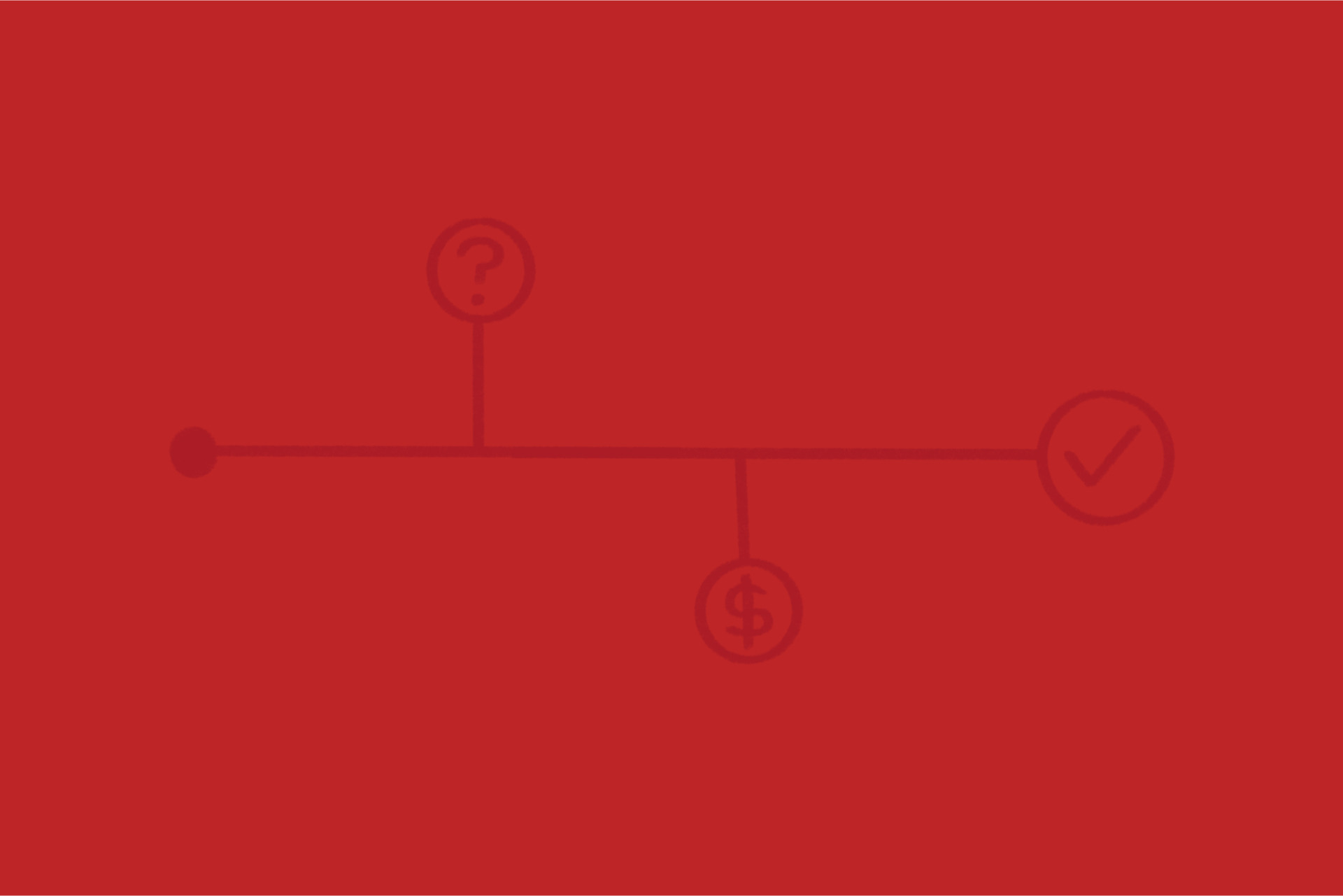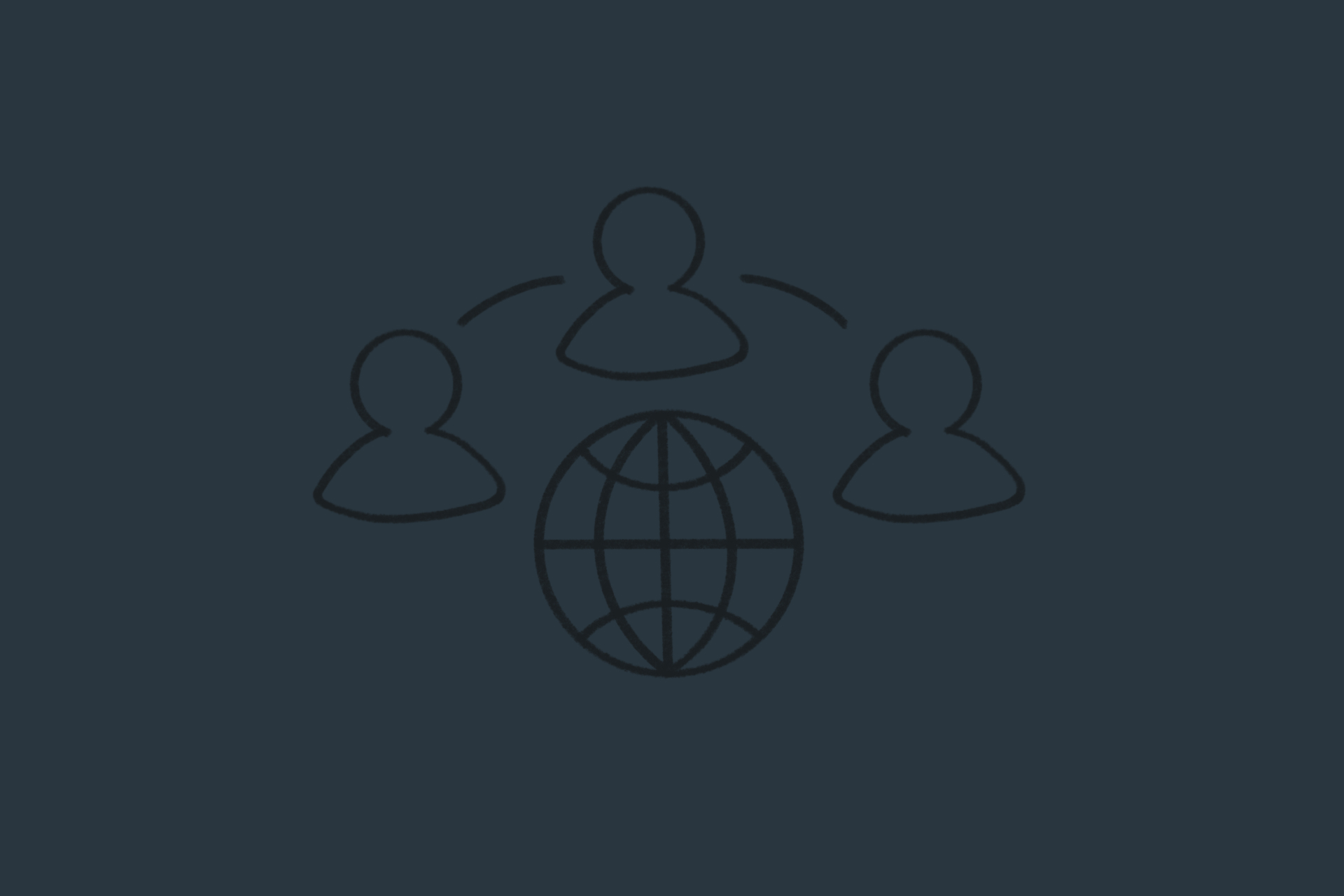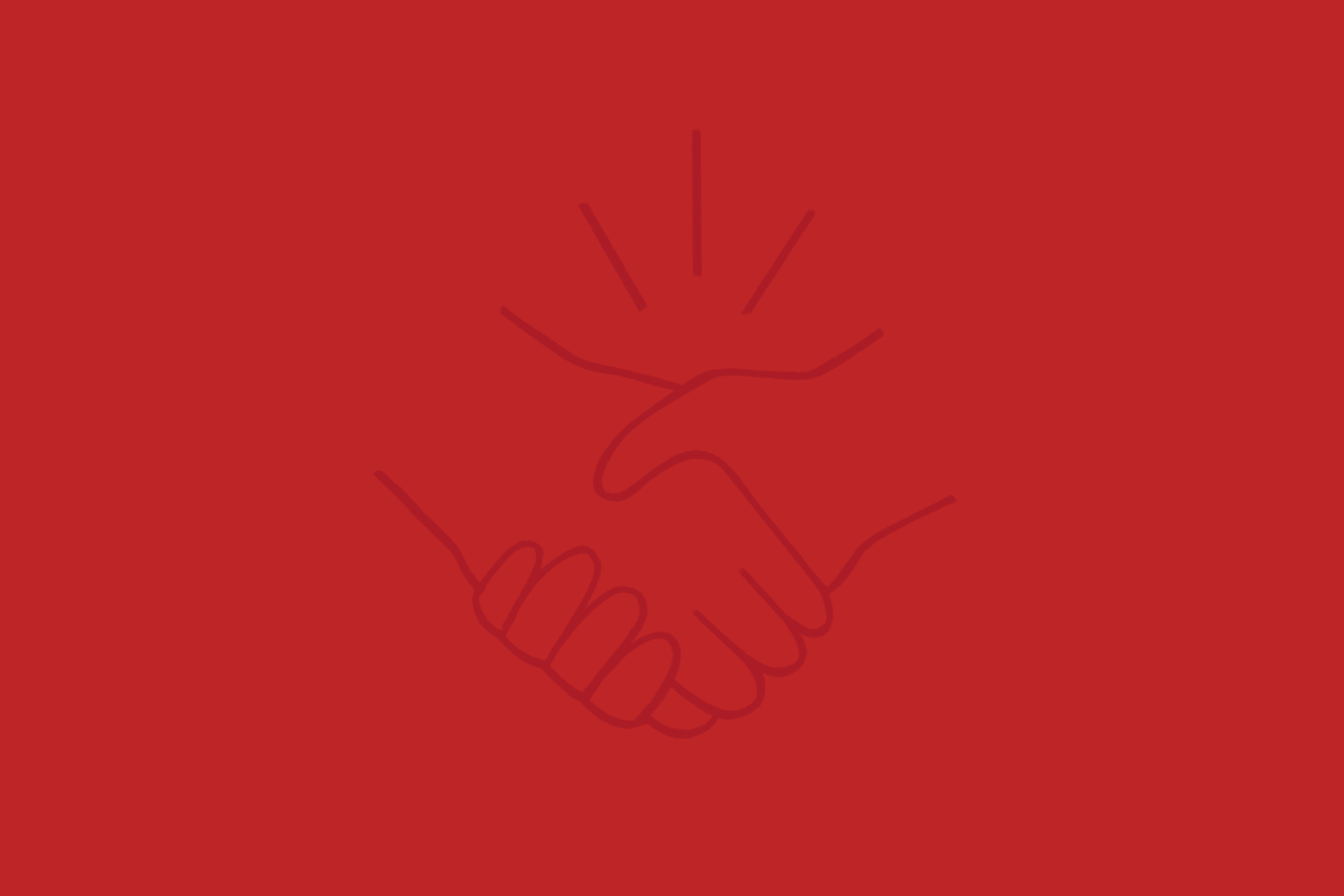Episode Summary
Our team shares four critical qualities to seek out in your UX and design hires. Visual Logic partner Andy Van Fleet and Director of UX Design, Kayla Byington answer how you identify and suss out these four qualities during the interview process.
What to look for in a UX hire
When interviewing for User Experience (UX) hires, consider including the prompts below to gauge whether the candidate embodies the 4 most important qualities of a UX hire, as established by Visual Logic:
- Empathy
- Problem-Solving
- Communication
- Humility
Find out if your candidate is empathetic:
- Can they walk in someone else’s shoes?
- Prompt: “Tell me about a time where you learned of a user challenge, firsthand.”
- Can they read the room?
- Prompt: “Tell me about a time you tried to present your work and the audience didn’t understand. What did you do?”
- Do they know how to listen?
- Prompt: “Tell me about the user research you’ve conducted.”
Find out if your candidate is a problem-solver:
- Can they think on their feet?
- Prompt: “Tell me about a time when you were put on the spot and were completely unprepared.”
- Can they work with minimal information?
- Prompt: “How do you work when you have 25% of the information you think you need and you can’t afford user research?”
- Are they creative?
- Prompt: “Tell me about a time when the ideal solution was going to be too expensive, but the problem still needed to be fixed?”
- Can they stop a bad idea from moving ahead?
- Prompt: “Tell me about a time you stopped work from moving forward because you knew it was wrong.”
Find out if your candidate is a good communicator:
- Can they tell you the ‘why’?
- Prompt: “Please tell me about this project. How did it come to be?”
- Can they tell a story?
- Prompt: “Why was this so important to the user?”
- Can they facilitate an outcome?
- Prompt: Tell me about the last time you led a meeting. What was your agenda? Did you achieve your goal? How did you do it?
- Are they genuine?
- No prompt or question. You have to use your BS meter on this one, and trust it.
Find out if your candidate is humble:
- Do they use “me” and “I” sparingly when talking about their work? Instead, are they using “we” and “us” language?
- Prompt: “What is the greatest project you’ve ever worked on, the one you’re most proud of, and why?”
- Can they talk about failures they’ve learned from?
- Prompt: “What is your biggest professional disaster, and why?”
- Can they admit when they don’t know?
- Prompt: “Have you ever had to tell your client or boss that you didn’t have the answer?”
Transcript
Andy: Joining me today is Kayla Byington. Kayla, we’ve been working together for 12 years now on some pretty amazing projects and have gone through a lot of, interesting times as Visual Logic. Together, as a group and have hired a lot of interesting people.
And we’re gonna talk today about how to hire for UX talent, and the tips and tricks to kind of go about bringing on the best possible talent. So Kayla welcome.
Kayla Byington: Yeah, thanks. I mean, overall, I think we’ve done a pretty good job. The past 12 years. We’ve had a lot of fun with the people we’ve hired. We’ve gotten it wrong a few times.
Andy: We have. Yeah, but we’ve learned a lot along the way, a
Kayla Byington: a lot. Yeah.
Andy: Sometimes I describe our group as, um, a family. And I think that when people hear me say that they think it’s BS and in a recent, , interview with one of our recent hires, uh, she wanted to know what the culture was like here.
And I know that we’re not talking about culture today, but this is part of the hiring process. And I said It’s really like a family, but I don’t want you to hear that from me. I want you to hear it from other people in the organization. So she went and talked with, I think, three other people and had one hour interviews with them where she could just ask questions of the team and to see like, what is visual logic really like and what makes us tick?
Because I wanted to make sure that she wasn’t feeling like she was being sold a bill of goods.
Kayla Byington: Well, and we invest a lot of time in that hiring process and, and we want them to be invested in us. Right. We’re not doing this. Should they come on for a year?
Andy: Right.
Kayla Byington: looking for people that are going to be a good, long term fit.
Andy: people That’s exactly right. And that takes a lot of energy from everybody. So I think maybe the first question that we could talk through is like, what are three to four attributes that, that you think that we do a good job at, , looking for in a UX hire or a potential UX hire at visual.
Kayla Byington: my four are empathy, humility, problem solving and communication.
The number one I have to say is empathy. I can’t emphasize how important I think empathy is, uh, you know, The research I’ve done, it’s a muscle, it will atrophy. If you don’t use it, you lose it. I was just looking up a study and back in 2010, the university of Michigan put, one out that said between the 1970s and the two thousands incoming college students were 40% less empathetic than they were.
And I just, and I read further and it said between 2000, 2010 was the most significant decrease because of online messaging and social media. And I just sat there for a minute and I thought, wow, if that was just 2010, think about what happened between 2010. And 2022, I mean, social media’s off the charts,
Andy: Right?
Kayla Byington: right The pandemic where we were all isolated and sitting in our homes by ourselves. And I just, I feel like humans, humans need humans. And you know, this lack of empathy that I, you know, I feel like we’re all feeling because we haven’t practiced is causing a lot of heartache in the world. And you know, that’s not just a design problem for you and I to work on.
It’s a, it’s a human problem.
Andy: It is, I mean, you hit the nail on the head where it a lot has changed in the last, I mean, there’s different segments in the study that you saw, but a lot has changed, obviously even more so in the last 12 years from that 2010 timeframe to now, . Do you feel like then it’s becoming harder to, to find that in a person. And, and if so, how do you spot somebody who is empathetic versus how do you spot right away?
Somebody who is may, may not be as empathetic as, as we would be looking.
Kayla Byington: weird. I do think it’s harder. And the younger. I sound so old when I say this, but the younger generation, I was just coaching volleyball at camp and they couldn’t listen. I would give them multi-step directions. And after step two, they were, they were done. And I just, and that was another one of those things in my mind, I’d be like, how is this possible that you cannot listen to directions?
And I thought, well, they’re on their phones. They’re on TikTok. They’re on Instagram bopping between all of those and Snapchat. And again, I sound so old saying all of this, but I just felt like. This is even worse than what we’re seeing from the college graduates. And I just feel like it’s, you can tell if someone’s empathetic, if they listen, if they have good, you know, nonverbals, , because that type of stuff is so important to what we do when it comes to research, we have to be really, really good listeners.
Andy: How do you isolate that? And through the interview process?
Kayla Byington: Well, I don’t do it on purpose, but everybody that knows me knows I make a lot of faces. I’m a pretty animated person. Yes you do. And I think, you know, when you’re in the interview process and somebody says something and I make some sort of face, if they recognize that, I mean, I’m not doing that on purpose, but I think that’s a good, you know, a light bulb goes off and says, Hey.
They noticed that I was uncomfortable with that answer,
Andy: so all those faces you were making were intentional
Kayla Byington: totally really intentional.
Yes,
Andy: are there some things that somebody says or the way that they handle conversations that also you. think Okay, this is an empathetic person versus somebody who is, is doesn’t have that ability to flex that muscle, like you said.
Kayla Byington: If they will give a reason for a design change or modification and they say, well, because I know this about the user. Versus because I liked it or looked better. Right. I mean, that’s an immediate check the box, like, okay, these guys are on the right track.
Andy: It is. Absolutely. And I think too, , one of the observations that I have is, and I know you do this as well is like, we versus me. , I think somebody who is not empathetic uses more of that. I, and me language versus we and us language.
Kayla Byington: Yeah, definitely. When they say, well, I probably would do it this way. Or when I open a bank account, I did this versus someone who said, well, I talked to my grandma. Yeah. And my grandma tried to open the account and she did it this way. Right, right. Yeah. That’s another really big one.
Andy: it’s a big difference. Mm-hmm yeah,
Kayla Byington: That gets into then humility too. So we talk about that eye and we thing when it comes to humility. Right. And I do think there’s a difference between empathy and humility. Yeah. And that one is, you know, can you admit when you’re wrong mm-hmm or that you made a mistake, um, you know, you tried something and it didn’t work.
And I feel like that takes, that takes some courage. Right. You know, I’ve had to walk into a room full. of Stakeholders and clients and say we messed up
Andy: yeah. And that’s, that’s hard to do.
Kayla Byington: It is hard to do. Yeah. And then you have to be able to think on your feet and problem solving, get yourself out of that. , but I think, you know, that humility, that goes a long way in our office to say, I, I don’t know the answer and I need your help, Andy, to figure this out.
Andy: do you have things that you look for from the humility perspective of, you know, this person definitely has humility. Are there certain questions that you might ask. I think I’ve got my answer too, but some things that you might do to find out if this person does have humility, cuz yeah, I agree.
There’s difference between empathy and humility and humility is, uh, you know, equally important.
Kayla Byington: well, there I’d say the approach. They take a lot of times we give them a project and you know, if it’s home security that we’re asking about. and They, you know, they are willing to admit to say, I really didn’t know where to start, or I didn’t know how to do this part of the research. And so I tried X, Y, Z, I think that shows a lot of things.
Right. It shows that they knew they didn’t know. Right. Um, and it also shows that they were willing to try anyway. And that’s, that’s a big thing too. Because we don’t want people that just say, I don’t know, and throw my hands up and, and sit up the chair and wait for someone to come help them.
Andy: That’s absolutely true. Those that those two things tied directly into the types of work that we do. Right. Mm-hmm it, it, it, they are, um, very complex projects. Yeah. That we really often don’t know anything about when we start out.
Right. I mean, Isn’t that the truth. I mean that there are all these different types of different projects, different domains that we work in, and that we have to learn a lot quickly and admit that we don’t know. And so, you know, I think that’s one of the things that we try to emphasize too, is that you can’t be afraid to ask, uh, a question that you would kind of be categorized as a dumb question or something that makes you feel like you don’t know what you’re talking about, cuz you really don’t know what you’re talking about.
So that’s a great point. And then being able to then take that information and do something with it.
Kayla Byington: And that was super hard for me in the beginning. Right? Like I’m a person I wanna know. I wanna know it all. . And, and I also, you know, I had a story in one of the presentations I did where I used to spend 10 minutes in the spaghetti sauce aisle because I wanted to know the cost per ounce. And I wanted to look at the ingredients and I wanted to know if, if this was a good brand, because they gave to charity versus this one.
And it was just, I couldn’t, I couldn’t make a decision and I really have had. To expand on that and like, just go, just start somewhere because it’s progress over perfection
Andy: Right, right.
Kayla Byington: Yeah.
Andy: And that’s hard. I mean, you can interview for that to a certain degree, but I think you pointed to our project that we do. And I know that there’s some opinions about whether a UX practitioner who’s looking for a position should be asked to do a project. And I’m of the opinion that it really helps a candidate to shine and see if they are a right fit here.
And to see if they’re gonna thrive here. And I don’t know of a better mechanism, um, for us to utilize for a potential candidate to, to shine in that way. We try to minimize the amount of time that goes into that project. It, it, you know, we say three to four hours, but there are people that spend a couple days on those types of projects, but, I think the reason why we’ve held to that is because it really gives that candidate, the ability to, to demonstrate their creative thinking, their strategic thinking, and then also that presentation layer. So those three things are really important. For them to have this platform from which they can show their, show us their best work and, and how they present their best work.
I mean, a lot of, you know, a lot of people that we hire, I think their work is under either NDA or, or they can’t show it, which we, um, understand totally understand. And that’s the way that we handle business as well. But, um, so I think just share your perspective on some of. Some of those, you know, projects that we’ve seen people present.
And then some of the, the learnings that we’ve gotten from that,
Kayla Byington: That project does show us so much, you know, in the problem solving space. Are they creative and not, not like can they paint, but right. Can they think of creative solutions to the problem that we’re asking?
can they think on their feet? I mean, we ask hard question. and again, sometimes it’s okay to say, I don’t know.
Andy: okay.
Kayla Byington: absolutely.
But there’s other times where we are, we’re poking and hoping that you can, can think of something, you know, what you should have done or could have done, you know, and we want an answer, um, that idea of working with minimal info, you know, we’re giving you a one pager, you have three days to do it, right.
Turn it around. Let’s see what you’ve got because there are projects like that, that we work on Um,
Andy: on Yeah.
Kayla Byington: Yeah.
I’ve been there, done that. Um, and, uh, when it comes to communication, communication, I feel like there’s been times where we’ve gotten done with an interview and said, oof I don’t think we could put that person in front of clients.
You know, they didn’t, they didn’t own the room. They didn’t have a good “why”. We talk about that all the time. Can you, do you know the “why” behind what you’re doing? Right. You know, they, we don’t just design things to design them to look good. There’s a purpose. Uh, so that’s really important.
Andy: And the project helps this, I think, to come to light mm-hmm , as they’re describing, I designed it this way because of this problem or this information, I gathered it solves this problem in this way.
Right.
The communication aspect is key not every person that is a UX practitioner has to be, you know, this polished, you know, communication expert that, that sounds, you know, eloquent when they’re describing a solution. But talk about, I mean, there’s some foundation there from a communication standpoint, in order to be able to articulate the work that’s been done.
Great.
Kayla Byington: You have to be able to sell your idea. Because even though you’ve done all this research and you have information to back it up, there are still probably multiple right ways to design it and you have to go sell somebody on why your way is the best. And I think that no matter your position in a company, you have to start being able to do that from day one. And that’s where, you know, telling that story. We talk a lot about that, you know, taking the persona into account and saying, you know, this person has to wake up at 5:00 AM and catch the bus and do you know, like bringing that to life and then showing how that design solution is going to make that person’s life better is just really powerful.
Andy: It’s so true. It’s so true. Um, I think one of the things I wanna do is just walk back a little bit in part of our process. Cause I think we got animated about it and jumped forward to, um, I think the UX project, but I’ll just kind of outline for the listeners, what we typically do in our hiring practice, um, which is look at their resume and their portfolio.
First, and then I want to come back to, what do we look for in a portfolio? Cause I think that’s important. And then the initial interview, which is really a screener call, which is 20 to 25 minutes where, um, we don’t wanna waste their time and, and they, you know, really don’t wanna waste our time either. So it’s that initial call.
After that, then it’s a, it’s, uh, in more in depth interview, which is probably an hour long with our key leadership. And I wanna talk about that a little bit and from your perspective on that, and then at that point we give ‘em the assignment and then have them come and present. So it is a lengthy process. and we do that to be intentional about our hires and again, to make sure that they are, um, the right person for us and we’re the right organization for them. And that’s a, that’s, you know, a two-lane street, a two-lane road on that. , but going back to the resume and the portfolio, maybe some key highlights of things that you look for in a resume in a portfolio.
Between the two of us, we’ve looked at thousands of resumes and portfolios. I know that this year alone I’ve probably looked at 500 mm-hmm , um, resumes and portfolios for, for us, but also to help some of our clients who are looking to build their UX teams.
And as we act as the hiring branch for them as well.
Yeah.
Kayla Byington: Yeah. Again, portfolios can be hard because if there’s an NDA in place for the majority of your work, you know, what’s left to show. But, uh, you know, when we do see a portfolio I’m looking for just, are they good at foundational design? Things, you know, if you’re gonna be a visual designer, I wanna see that you understand hierarchy and white space and typography.
Um, because that, that counts, right.
Yes, the aesthetic usability effect is real. Yes. Um, so those are the big things, you know, just from a general design portfolio, but then, you know, some of the new hires we’ve had, they’ve gone as far, they’ve had a lot of UX projects coming out of college and you could see their research methods and their artifacts and those.
Those are impressive. Um, and that’s something that I feel like we are just maybe starting to get more of recently than we have in the past where it’s been, mostly just a visual design portfolio.
Andy: Right. Absolutely. There has been a lot more education that’s come in the UX realm and in those portfolios, you’re right. There’s a lot more UX thinking in some of those. I see a lot of people that understand the process. They do, you know, some affinity diagrams or, you know, some, some lightweight user research.
They do some affinity diagrams, they lightweight personas, and then they put these, uh, low fidelity wire frames together. And then these high fidelity wire frames together without regard to solving the problem mm-hmm . And so I feel as I look at that, and I would say, And this might not be very popular, but I would say I see a lot of people who have gotten UX certificates that do the process well in those categories, but don’t solve the problem in the right way.
Kayla Byington: If you break up the process into understanding design and validation, design, and understanding, I still think are very much an art. And so a person can go through and do the process to the textbook, but it might not get you what you. need And so with every project we encounter, it’s, we’re still making a very project specific plan to get the answers and get to the solution that we need. And so the, yeah, the problem with just a portfolio that shows the process does not show that creative, um, or problem solving aspects sometimes where you get thrown on the curve ball.
And it’s like, I don’t have time to do this. So I have to run with this or. Personas are already done and I don’t have the budget for that. And, um, so I think you, that on the go thinking is lost in just a flat portfolio project compared to when we offer them a project to do in an interview setting that shows a little bit different thinking.
Andy: Absolutely. And I think what I guess, take that a little bit further. I think what people might be surprised at is that when we do give a UX assignment to a candidate, We’re more than willing to help them, like along the way, like more than willing to say, ask questions, do a check in if you want. Um, we’re here to guide you and help you.
We won’t give ‘em the answer all the way, but we’ll certainly be there to help them. To put their best foot forward when it comes to their deliverable, because it’s not a, uh, Hey, I got you type of test. It’s a, we wanna work through this together. And if you have questions, we’ll certainly make time. And we’ve done this time and time again, to set aside time with our team to say, okay, this person wants to meet with us and ask some questions about the assignment and, and get them on the right track.
Um, I think that also just goes to the amount of care and time that we put into making sure that we’ve hired the right person. and when we have gotten it wrong, which we have, you know, in the past, we, we have hired too quickly. Um, this was many, many years ago and hired very quickly and ignored our process that had been effective.
And that led to some pretty dramatic conclusions, I think for, um, for those folks employment here. And then also just, it, it really, you know, impeded the team.
Kayla Byington: Yeah, the energy of the office was just completely different. We went from ping pong games and laughter and everyone out in the common space to everyone going into their offices and, you know, not wanting to, to even be around those people. And it’s not because they were bad people. Right. They’re they just didn’t fit with us.
Andy: just Mm-hmm
Taking our time to hire and the, and being true to our process that has been very effective, um, is something that was ignored because we were growing too fast as an organization.
And. so I think for those that are listening to have a process that you are, that you know, is going to work or, you know, even borrowing our process, which is fine. That has been very effective, um, is something that is key to getting the right hires because. This is a different skill set you’re hiring for, you know, as a UX designer, you have to be empathetic because you’re trying to engineer out a lot of the complexities that the end users are dealing with.
And so you have to have that, all of that empathetic muscle, like you said, and if you don’t take the time and aren’t cautious about hiring for it. , you’re gonna have a team of people who aren’t empathetic, aren’t, uh, humble, or, or have humility. Don’t have the creative strengths that you need, or the strategic thinking that you need in order to solve some of these really complex problems for you.
And the whole time that you spend in hiring them will be all for not
Kayla Byington: It’s a lot of parallel to our UX process, right. We say spend the time and money trying to understand, let us have that space because we’re gonna get it right. If you give us that time, it’s the same with hiring. We, we spend that time understanding so we can get it right in the long run, and it’s gonna be more cost effective for us that way, uh, to do it right.
Andy: right. It’s absolutely true. Yep. Um, maybe in summary, we can just reiterate the four key attributes that you look for. And then we can also talk about, I think you have some additional material that will be available, um, in the show notes or, um, online that kind of go to this. I think you’ve got. Four different attributes that we’re looking for.
And then I think you’ve got some questions, you know, that interview questions that you can put into the show notes for people to be able to leverage some of those questions that have been really successful for us.
Kayla Byington: Yeah. So in summary, the four things were empathy, uh, problem solving, communication and humility. And so in the show notes, I have bullets for each and some interview questions, you know, for example, with empathy, one of the things we like, can you walk in someone else’s shoes? And, you know, sometimes we literally do that.
Right. We put our metatarsals go out to the farm. Yeah. Um, and so just tell me about a time you learned of a user challenge firsthand, you know, what was that like? What were you feeling? What were you thinking? You know, those types of things. Again, those are, that’s what we wanna hear. We wanna know. Can they get themselves in the mind of another person?
Um, so yeah, I will. I’ll post all of those in the show notes.
Andy: That’s great. And I think that’ll be helpful. And I think just to end on this too, um, again, we’ve looked at thousands of portfolios and resumes and I’ve. had Hundreds and hundreds of different interviews with people and, and have learned a lot about that. Um, and I think what I wish wanted to end on is that we’ve been as an organization successful with this, like for our own team.
One thing that I’m very proud of is that a third of our team has been together for longer than 10 years. So we have. been Getting this right for quite some time. And, um, and when it comes to hiring, we know that this has been effective for us and for our team working on our clients’ projects for them.
Kayla Byington: I think too, we hired like genuinely good people, you know, we’re authentic and I, and, and our clients can feel that we’re not, we’re not out there selling BS.
And we’re not selling BS to each other, which is. Another good thing. So
Andy: Well, you could try, but it wouldn’t last very long here, right? Yeah. Kayla, thank you very much for your insights and your wisdom.
Kayla Byington: Thanks.













